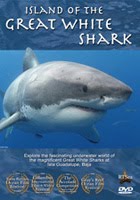 Scientists are continually researching some basic questions regarding biodispersion and animal behavior. With shark research, they are looking into why sharks congregate in certain areas, particularly with sharks that migrate. It has only been in recent years that marine scientists have identified migration routes for great white sharks. Now the question is why? What attracts them to a particular area? Is it because of an available food source, a particular geography, temperature, or some other environmental factor?
Scientists are continually researching some basic questions regarding biodispersion and animal behavior. With shark research, they are looking into why sharks congregate in certain areas, particularly with sharks that migrate. It has only been in recent years that marine scientists have identified migration routes for great white sharks. Now the question is why? What attracts them to a particular area? Is it because of an available food source, a particular geography, temperature, or some other environmental factor?With white sharks, the jury is still out, but an article in the Journal of Mammalogy examined the habitat preferences of California sea lions and found that the geography of the site played a critical role. The study examined 26 sites in the Gulf of California and found a preference for sites with larger rocks, lighter color substrates, and convex (bulging outward) shorelines. These characteristics play a key role in providing a more comfortable temperature environment as California sea lions are susceptible to heat stress.
This then brings up the issue of climate change and the impact that rising sea and air temperatures can have on sea lions and other pinnipeds. Will these sea mammals be able to successful adjust and/or move and find thermally suitable habitats for breeding and day-to-day existence? Will the migration of pinnipeds to new locales upset the local balance of the predator-prey hierarchy?
As often is the case in science, one question leads to several more.







No comments:
Post a Comment